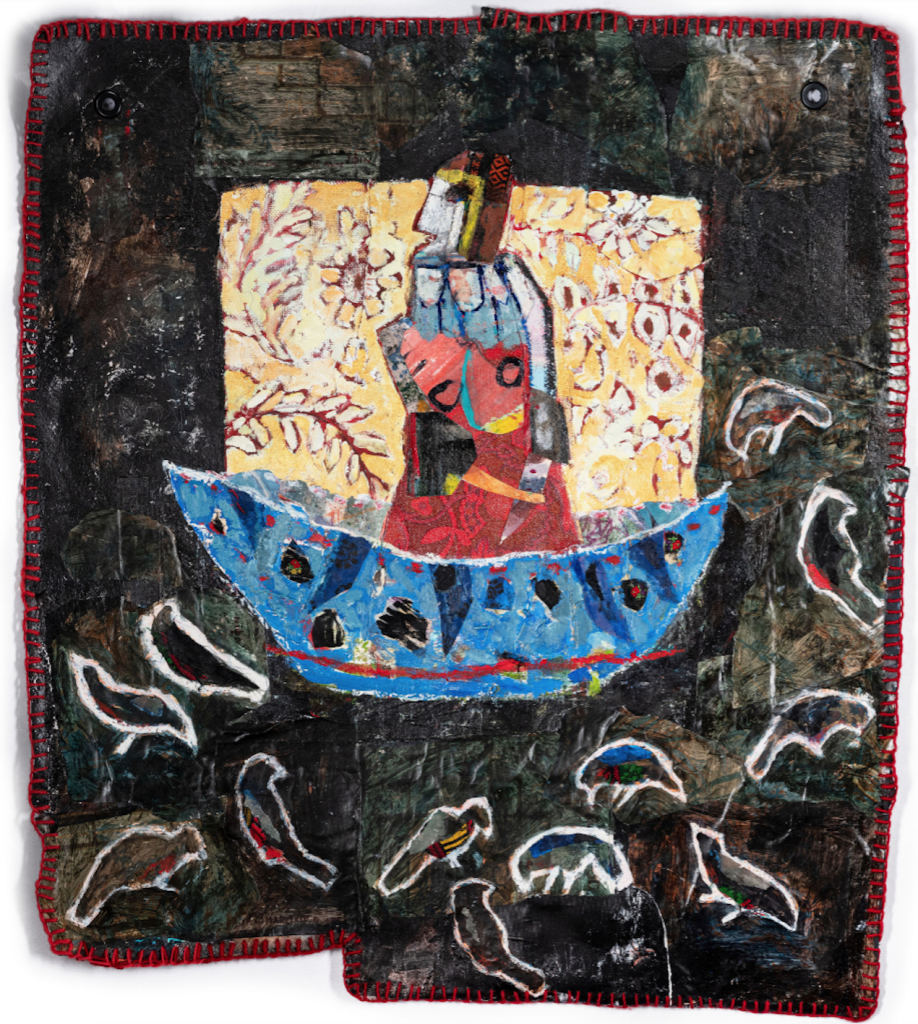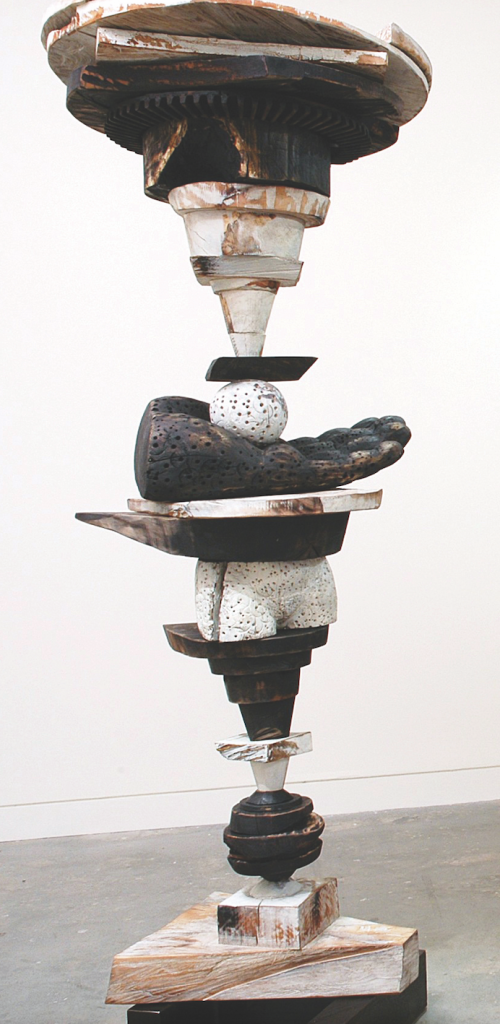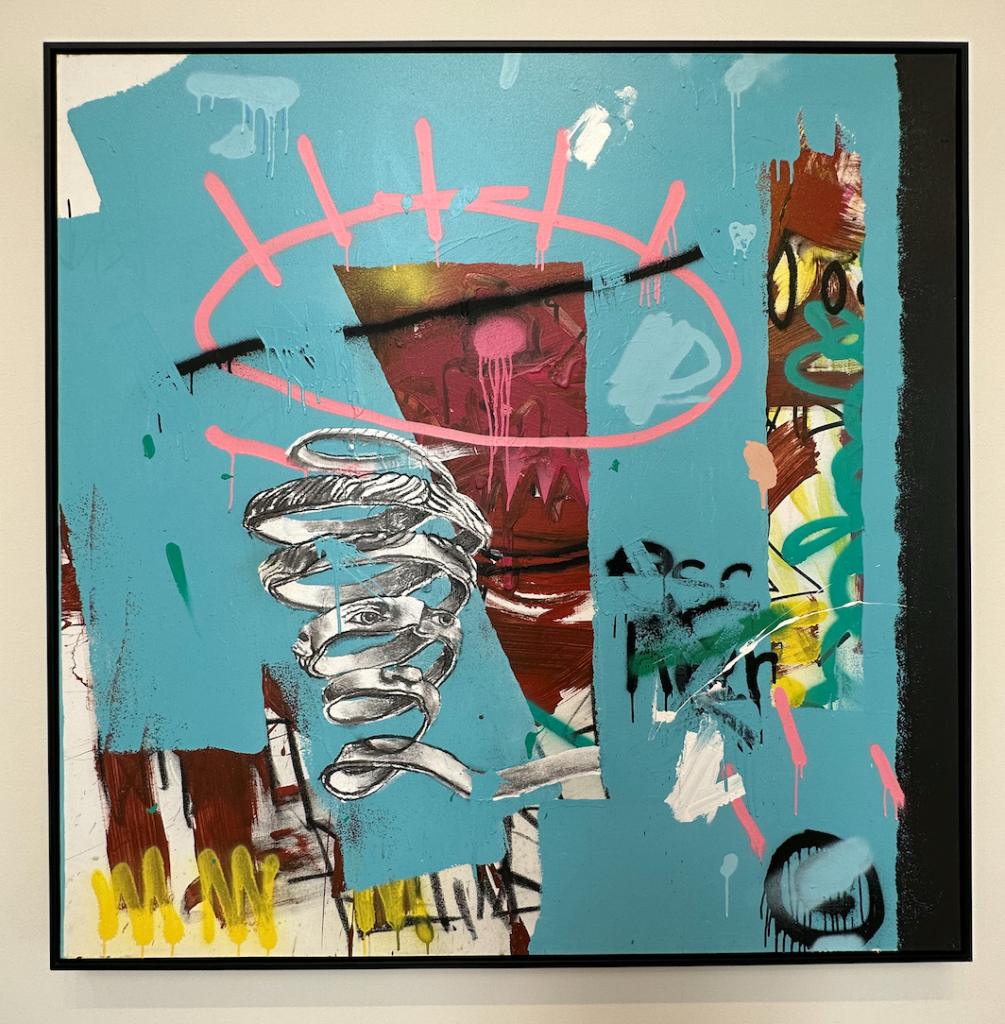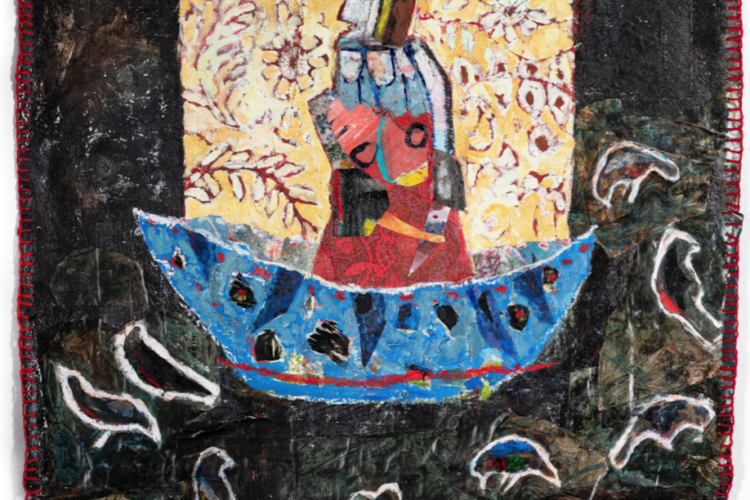
Staci Swider
Interview by Micah Franklin
Staci Swider was recently accepted into the National Association of Women Artists (NAWA) as a juried member; she is also a certified GOLDEN Artist Educator. The Aiken artist’s work reinterprets patterns and textiles into boats or vessels connecting “both past and present,” or the traveling soul through time. Swider’s works can be found at Art on Broad and The Frame Shoppe in Augusta, The Hutch in Aiken, S.C. and the Taupe Gallery in North Wilkesboro, N.C.
Do you see your work in dialogue with the tradition of Southern folk-art practices specifically or broader folk-art practices in general?
I’m drawn to the broader spectrum of folk art — it’s not necessarily just the Southern traditional folk art. I find folk art to be fairly ubiquitous around the world. The themes that people tend to pursue also reoccur around the globe. I also really love kid art; I was an art teacher for a long time. The raw energy of children’s art is very reminiscent of folk art, and I think that that’s what I’m drawn to.
“I recently started creating sculptures of (I call the vessels soul sleds) the soul sleds and they had to be this thing that when you see it, you want to touch it and feel that if you got inside it, all of your cares and worries would go away. So, I’ve started lining them in mink; they’re very tactile.”
staci swider
One of the other things that came to mind was the presence of quilting motifs in your work. Does that tie into the grandmotherly and ancestral aspects of your work?
My maternal grandmother worked in a children’s clothing factory, and she sewed. One of the earliest memories I have was in the bedroom where I stayed at my grandmother’s house. She was always bringing home fabric and lace and trim. She would make clothes for me and would bring clothing from the children’s factory. My mother also taught me to sew, knit and crochet. I was just born into and surrounded by fiber and textile — not anything fancy or artistic, but just the practical side of life.
Would you speak on your involvement with the NAWA and how it felt to be brought into the group?
NAWA is the oldest women’s art organization in the country. I took a year to prepare my portfolio. The first time I applied, I was rejected, but I took their comments to heart, and I thought if I’m gonna do this, I have really got to step up my game. That was when I started doing all of the reading and research that led to this narrative that I’m using in my work now. [When I was accepted] I had a hard time. On the one hand, I knew I was doing the best work that I had done up until this point, but I had the other side that was like ‘Really, are you that great, are you really gonna sit in a cafe and have a conversation with these artists? Like you’re just some woman in Aiken’. It’s gotten better, I would say, because I’m putting myself out there more, and people whose opinions I truly respect have validated the path that I’m on.

Brian Rust
Interview by Aimee Serafin
Brian Rust is best known as a sculptor, but his work also includes large-scale installation, digital collage and ceramics. His exhibits include the South Carolina Botanical Garden (Clemson, S.C.); Stone Quarry Hill Art Park (Cazenovia, N.Y.); Western Michigan State University (Kalamazoo, Mich.); Artfields (Lake City, S.C.); Mid-Columbia Arts Center (Kennewick, Wash.); Georgetown University (Washington, D.C.) and more. Local sculpture commissions include the Augusta Canal Authority’s “Stone Boat” granite installation in 2019. Rust’s most recent solo exhibition, Circle Forward Circle Back, was at the CANDL gallery downtown.
From where do you draw your inspiration for the totems?
One of my influences is Northwest Coast Indian carvings. They carved huge totem poles, the ones you would recognize with ravens and killer whales, out of Washington state’s native cedar. Some end up being 30 or 40 feet tall. In my early 20s, I was able to apprentice under a wood sculptor who lived in the San Juan Islands in the furthest northwest corner of the U.S. He had one of these totem poles and was a big fan of these tribes. I spent five summers living with him and his family, as an apprentice, and he taught me how to carve.
“If you are looking for common elements within the works, you will see first my personal aesthetic at work. My love of natural materials, colors and textures is in evidence. There is also the common element of weathered/eroded forms, a sense of age and the passage of time.”
Brian Rust
Explain the process of creating a totem.
I started these sculptures as a collection of 15 totems. I came up with the idea of making a stable base with a threaded steel rod that went up from the center so I could stack the elements. I glued several of the pieces together so certain sections could be removed as one piece. All of the totems of the series have the word “balance” in the title, and that’s because they are all meant to create this tension of things being in balance and tittering out of balance simultaneously. Juggling this tension is part of the art world — you come up with these great ideas and they can look so fresh in your mind, but trying to bring them into the world, sometimes, they can go all to pieces.
When is the moment of knowing they are finished, or successful, as a piece of art?
That is a tough question. I guess for me, for the totems, I like working in a series of three. Working on several at once is a way to keep ‘fresh eyes’ on them. During my apprenticeship, I also learned the importance of stepping away from a work, even if that ends up being weeks or months. Once the stains or finishes are completed, along with the numbered assembly, then it’s pretty much done.
What are some of the motifs in your totems?
Balance is a major theme of the totems. Other motifs are the hand, the heart, boats and anvils. To me, the hand is a great stand-in for the human figure. I studied Hinduism in India and researched mudras. So, the hand became a motif in my art. The boats, or canoes, are beautiful forms that connect to the idea of a journey.

Aort Reed
Interview by Aimee Serafin
Aort Reed is a muralist and contemporary visual fine artist residing in Martinez. A natural expressionist, Reed started at a young age to turn anything into a canvas, including his grandmother’s recipe book and the walls of his closet. His first Augusta-commissioned mural was for the Jackie M’s and Son Cafe on Milledgeville Rd. He was then contacted by the Georgia Cyber Center for a mural including Sharon Jones, as well as Westobou’s commission on 11th Street where Reed pays homage to famous New York neo-expressionist and primitive graffiti artist Jean-Michel Basquiat. His recent solo exhibit, CON•TEXT, was on display at the Westobou Gallery.
When did your passion for art as a career start to take off?
In 2010, I was making a living as a tattoo artist, but it was not fulfilling me. So, I ended up enrolling in the art program at then Augusta State University (ASU), and that had a huge impact on me. Students in the program took multiple studio classes like printmaking, photography, ceramics and painting — all at the same time — and that activated this personal discovery of creativity for me in all different mediums. That’s kinda a theme with me, simultaneity, because even now in the studio, I work on 12 paintings simultaneously. I literally bounce around with colors, words and designs from canvas to canvas while music plays in the background.
Are there other moments that stand out in your college career?
During undergraduate studies at Paine College, I had an art professor tell me that I had a natural way of doing things like complementary colors, balance and composition — but she knew that I did not have any formal training. Later at ASU, Janice Whiting (a recently retired Augusta University painting professor) reconfirmed those same things. She was one of my favorite professors. She used to always say, “Guy, you’re not afraid to paint, you’re just not afraid to paint and I think it’s wonderful.” She encouraged me to explore the outer limits of paint.
“The paintings are like diaries of my life.”
Aort reed
Tell us about your creative blocks.
I don’t get creative blocks. I can’t get them because of the way I work. It goes back to the prolific productivity that was part of ASU’s art program degree. Having so many weekly projects to turn in at once trained me to make that rhythm a part of the way that I work now. Hyper-productivity prevents creative blocks.
What advice would you give an emerging artist in Augusta?
Have your own voice. Don’t imitate other artists. Originality and authenticity are very important. People don’t go to Vincent Van Gogh and request a Matisse painting. They don’t ask Basquiat for a painting of Leonardo’s Last Supper.
Do you consider your works poetic statements?
I use words and I use lines, and I can do the technical skills of drawing, but I don’t like control. I like happy accidents and surprise. I pull words and objects from my daily conversations. I consider myself a recorder of my thoughts or human experiences with others, more so than a poet.
Where was your most curious mural commission?
A toilet. Yeah, I kept trying to figure it out in my head, but it never fully panned out.
As seen in the August/September 2023 issue of Augusta Magazine.

